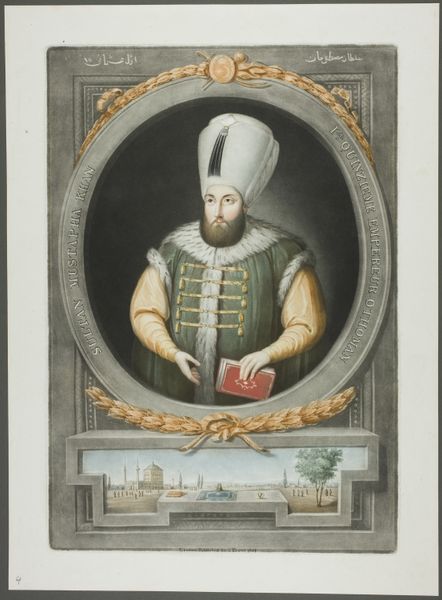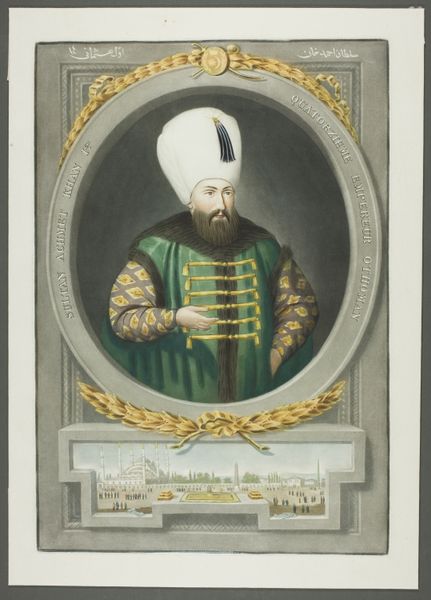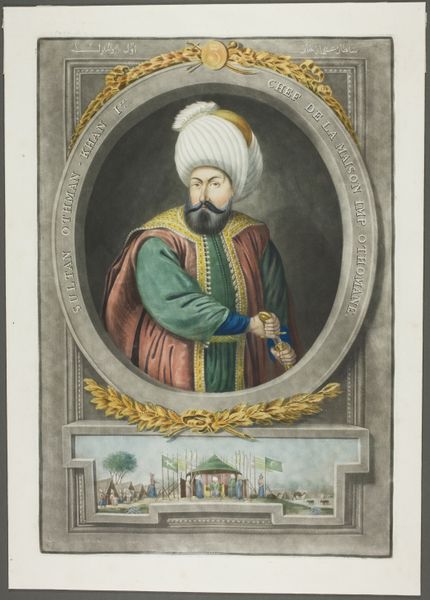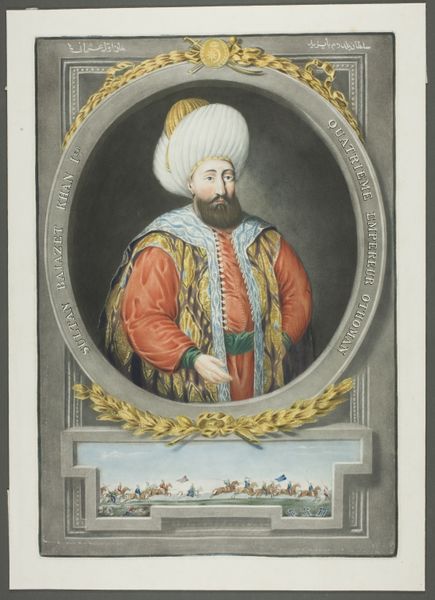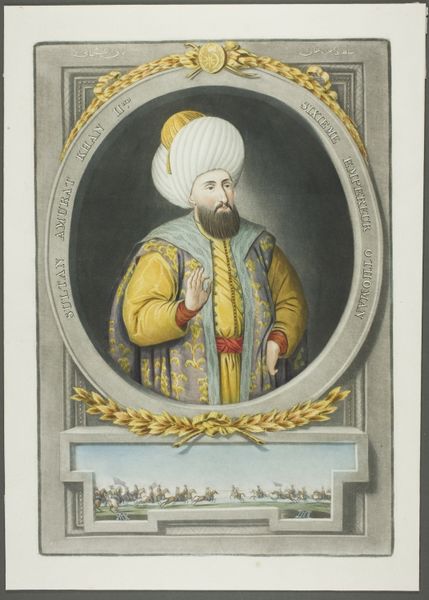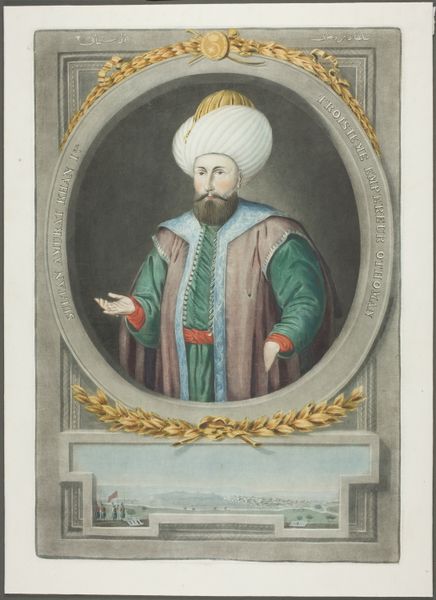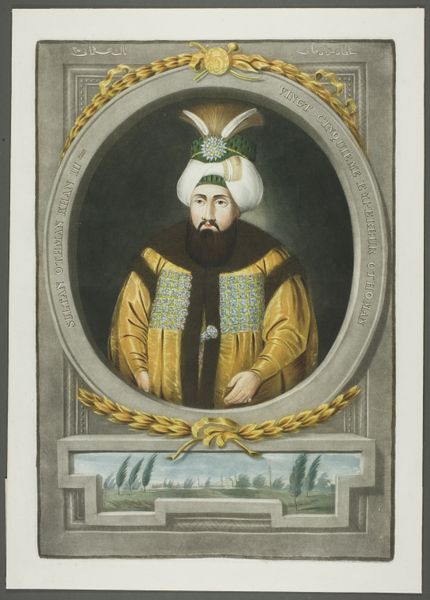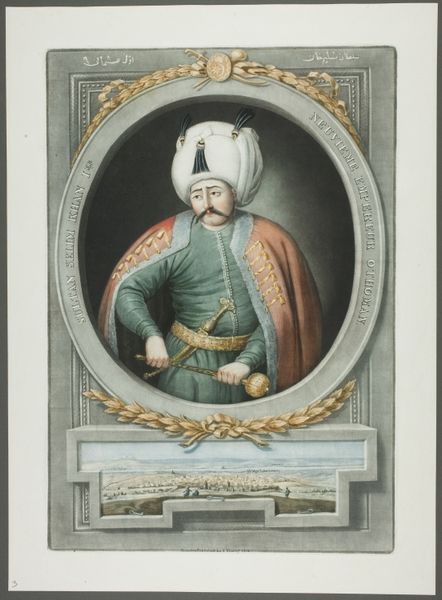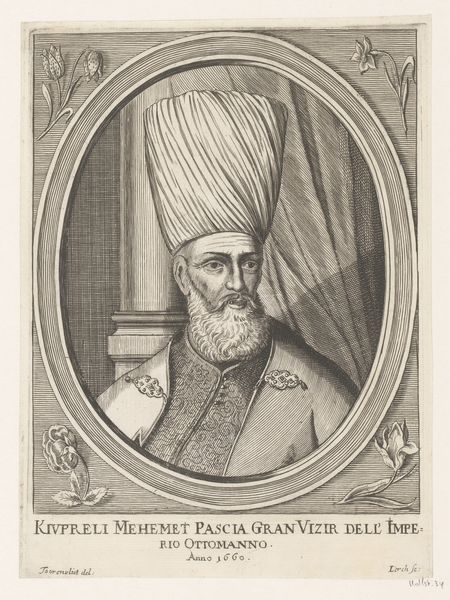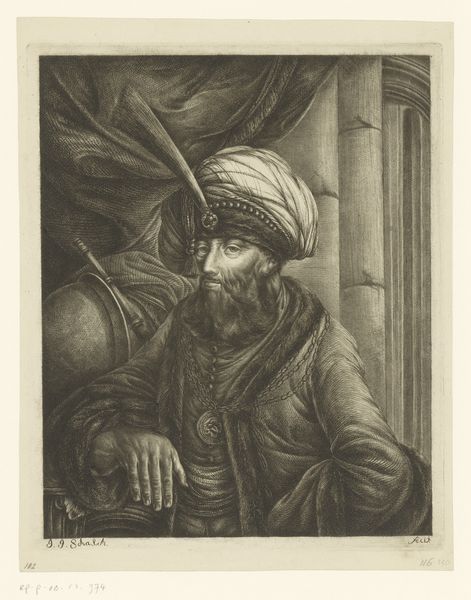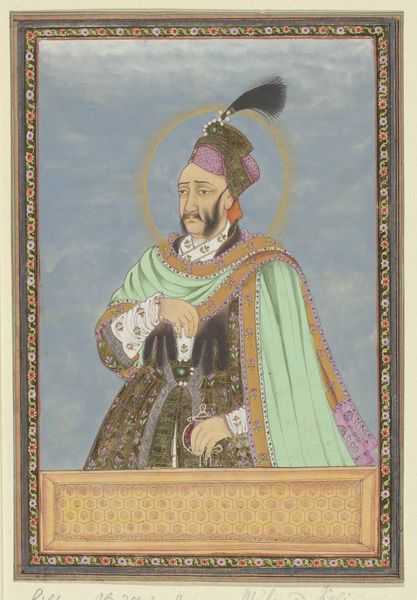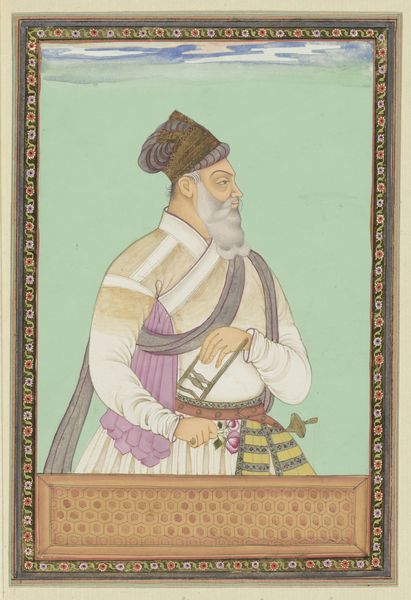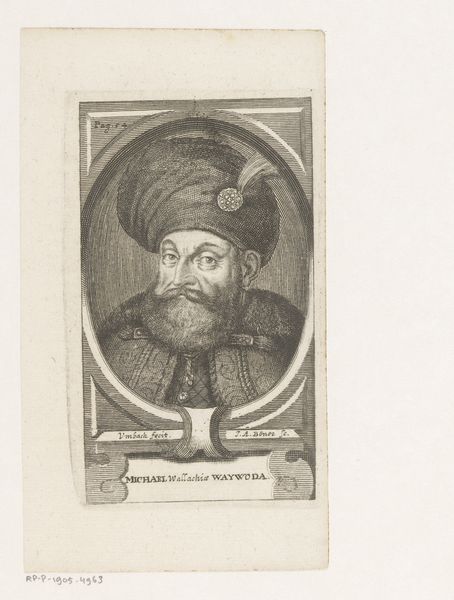
Abdul Hamid Khan, from Portraits of the Emperors of Turkey 1815
0:00
0:00
drawing, print, paper, watercolor
#
portrait
#
drawing
# print
#
paper
#
watercolor
#
romanticism
#
islamic-art
#
history-painting
#
watercolor
Dimensions: 375 × 253 mm
Copyright: Public Domain
Curator: Before us hangs a print from around 1815 titled "Abdul Hamid Khan, from Portraits of the Emperors of Turkey," rendered with watercolor on paper by John Young, now residing here at the Art Institute of Chicago. Editor: The piece exudes such a calm, stately presence. I'm immediately struck by the circular frame containing Abdul Hamid, almost halo-like, contrasting with the rectangular base presenting a scenic view. It’s a deliberate juxtaposition. Curator: Indeed, the composition is structured carefully, isn't it? Consider the meticulous arrangement: the subject centered, framed first by a circle, then by the angular architectural base, which anchors the ethereal watercolor above. Editor: Precisely. Below, the depiction of the built environment provides historical context and reinforces imperial authority and Ottoman splendor. You know, it gives the subject an almost unshakeable permanence. How do you read Young’s technique? The detail in the textiles versus the atmospheric landscape. Curator: The application of watercolor lends itself beautifully to conveying both the tactile detail of the fur trim on Abdul Hamid's robe and the more atmospheric qualities in the miniature depiction of what appears to be Istanbul, allowing the portrait to function on multiple representational levels. Editor: The turban! An emphatic focal point. What does its vertical thrust bring, given its opulent ornamentation? Curator: Semiotically, the towering turban and its decorative elements might signify Abdul Hamid’s status and spiritual authority, literally elevating him beyond the earthly realm while, at the same time, rooting him firmly within the cultural and political landscape suggested by the city vignette beneath. A strategic visual construction of power, no? Editor: No doubt, but in ways accessible to 19th-century European audiences interested in Ottoman rulers. That framing inscription—Sultan Abdul Hamid Khan Emperor of the Ottomans—that's key in directing its early reception, given the context of Western orientalism at the time. The portrait style invites contemplation, almost encouraging a personal connection, while reminding you of who is in power. It is thought provoking. Curator: Looking closely at how Young marshals these artistic elements underscores the capacity of art to negotiate intricate political dynamics and construct or mediate an empire's presence through imagery. Editor: It really makes one ponder the role of portraiture, printmaking, and the visual strategies through which political identities were, and still are, so consciously performed and received.
Comments
No comments
Be the first to comment and join the conversation on the ultimate creative platform.
